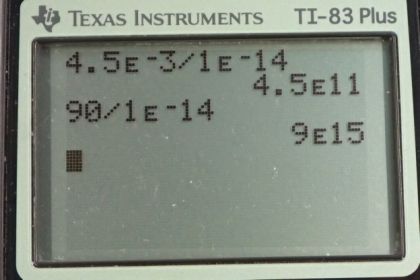Question
(a) Calculate the number of cells in a hummingbird assuming the mass of an average cell is ten times the mass of a bacterium. (b) Making the same assumption, how many cells are there in a human?
Final Answer
a)
b)
Solution video
OpenStax College Physics for AP® Courses, Chapter 1, Problem 35 (Problems & Exercises)

vote with a rating of
votes with an average rating of
.
Calculator Screenshots
Video Transcript
This is College Physics Answers with Shaun Dychko We're going to calculate the number of cells in a hummingbird in part A, and then the number of cells in a person in part B. And so, we need to make assumptions about what the mass of a hummingbird is for Part A and what the mass of each cell is. And so, we're told that the mass of a typical cell is 10 times the mass of a bacterium. And in question number 32, we're told that the mass of a bacterium, we can assume is 1 times 10 to the minus 15 kilograms. So, 10 times that makes 1 times 10 to the minus 14 kilograms. And the mass of a hummingbird, I had to look up on a search engine, about four and a half grams, which is 4.5 times 10 to the minus 3 kilograms. So, the number of cells then is the mass of a hummingbird, multiplied by 1 cell for every 1 times 10 to the minus 14 kilograms. And so, the kilograms cancel, leaving us with cells. We have 5 times 10 to the 11 cells in a hummingbird, let's assume. And then, our approximation for the number of cells in a human, let's suppose a human weighs about 90 kilograms. Multiplying that by 1 cell for every 1 times to the minus 14 kilograms gives us 9 times 10 to the 15 cells in a person.
